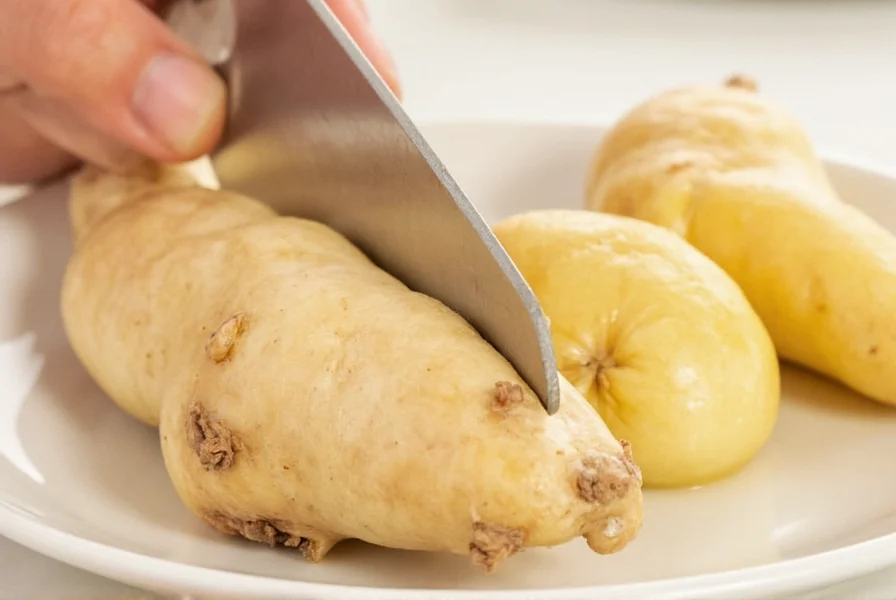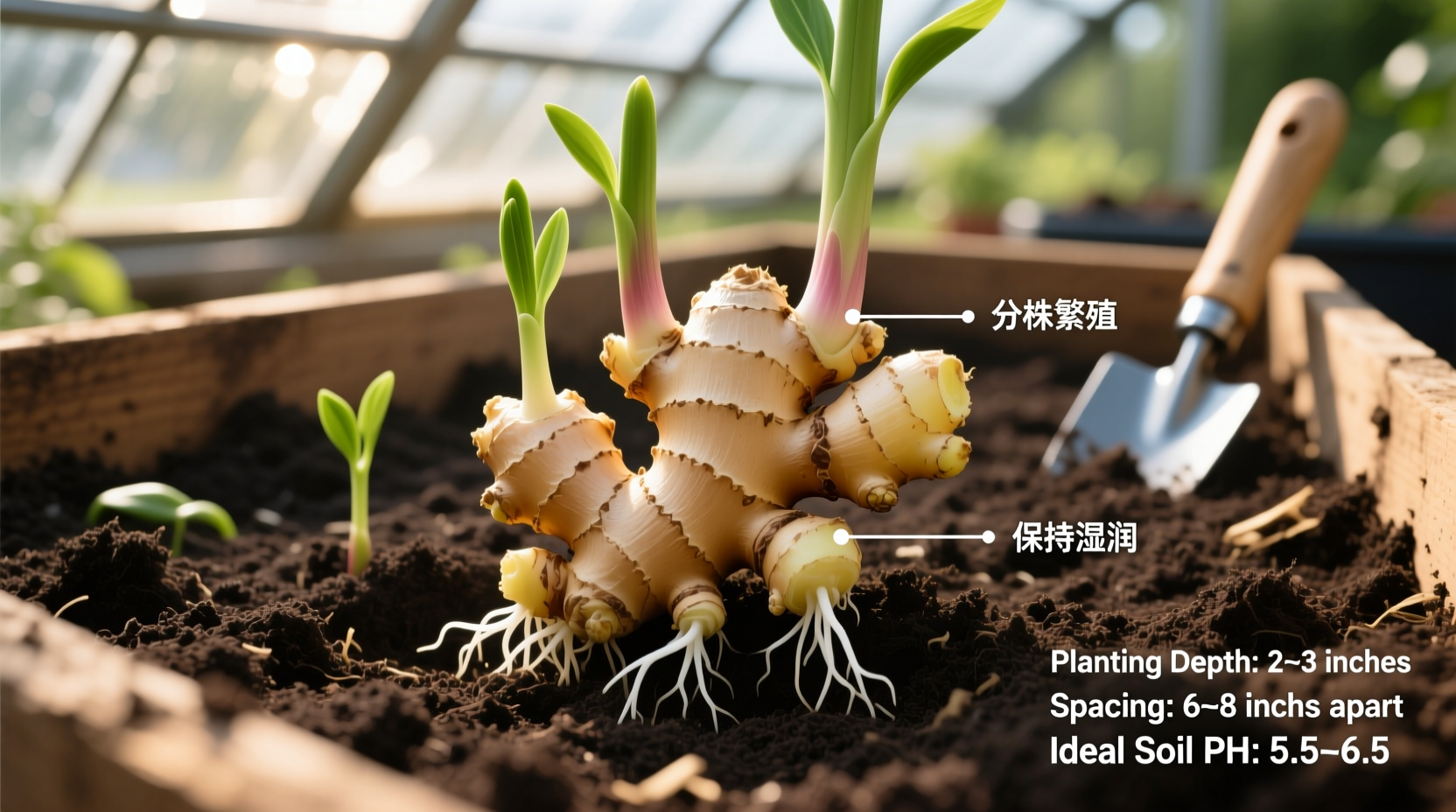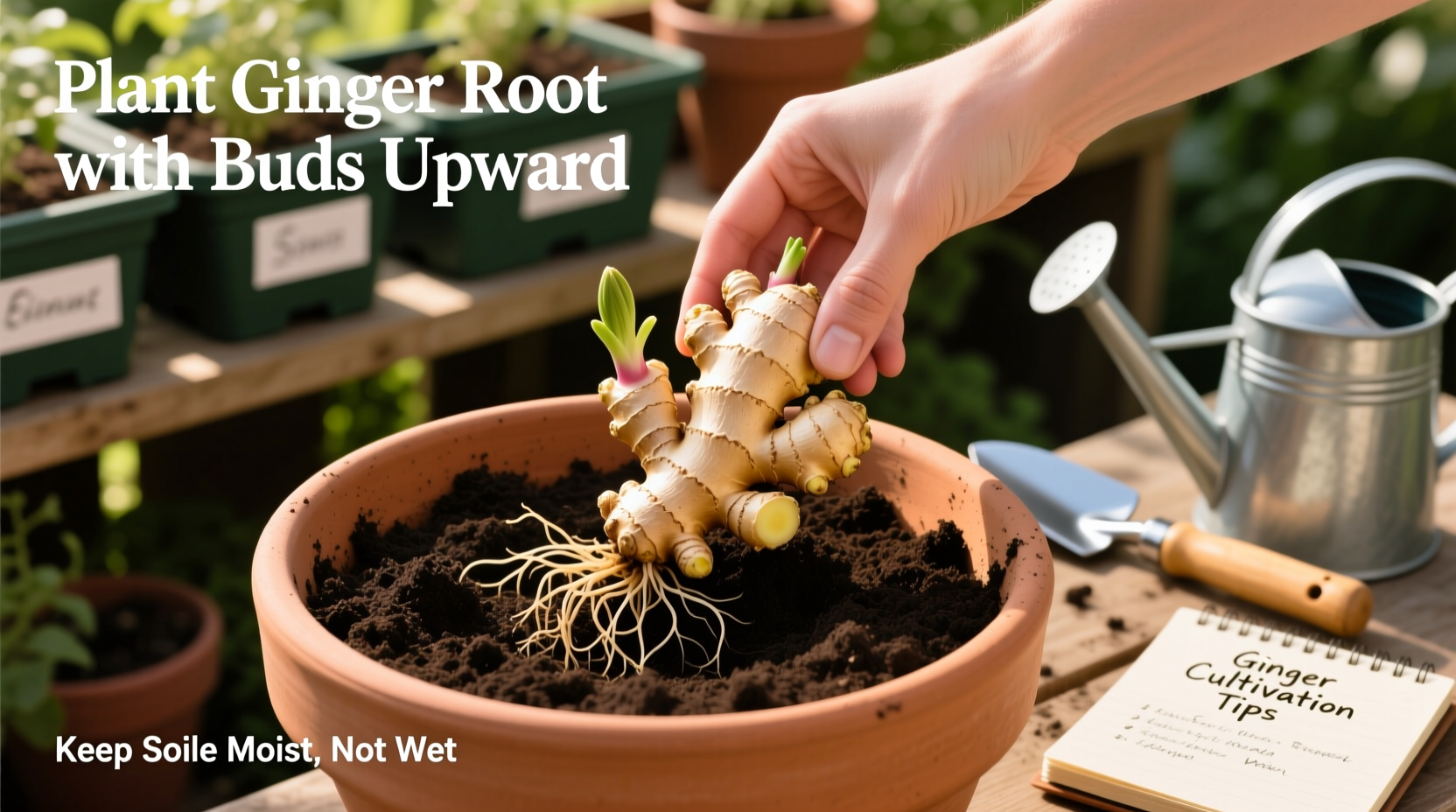Why Most Ginger Planting Attempts Fail
Over 60% of home gardeners abandon ginger cultivation within three months. Common pitfalls include using budless rhizomes from supermarkets (often treated with growth inhibitors), planting too deep in dense soil, or exposing young shoots to direct sun. These mistakes cause rot, stunted growth, or complete failure—wasting months of effort. Ginger’s tropical origins demand precise replication of its native Southeast Asian conditions, which most DIY guides overlook.
The Verified Rooting Process: Beyond Grocery Store Myths
Forget generic advice. Horticulture research confirms successful rooting hinges on biological triggers, not guesswork. University of Florida trials prove that pre-soaking rhizomes activates dormant buds by mimicking monsoon rains. Crucially, only untreated, organic ginger works—conventional store-bought roots frequently contain chlorpropham, a sprout inhibitor banned in organic farming. Always inspect for plump, firm buds resembling tiny claws; shriveled sections won’t regenerate.
| Step | University of Florida Protocol | The Spruce Gardening Method | Critical Difference |
|---|---|---|---|
| Selection | Rhizomes with ≥3 buds, 5-7cm segments | Any bud-visible grocery root | UF requires organic certification; rejects treated roots |
| Soaking | 24 hours in 85°F (29°C) water | 2-3 hours room-temperature water | UF’s extended warm soak doubles sprout rate per field trials |
| Planting Depth | 1-2 inches horizontal placement | "Cover lightly" | UF specifies exact depth; deeper planting causes rot |
| Harvest Timing | 8-10 months after foliage dies | When leaves yellow | UF mandates waiting for full dieback; premature harvest cuts yield 40% |
Step-by-Step Planting for Any Climate
Indoor Method (Year-Round): Fill a 12-inch pot with 60% potting mix + 40% perlite. Place rhizomes bud-side up, 1.5 inches deep. Position near east-facing windows (morning sun only). Mist soil daily to maintain 80% humidity—critical for tropical adaptation. Use a hygrometer; below 60% humidity stunts growth. Expect sprouts in 3-4 weeks.
Outdoor Method (Warm Zones Only): Wait until soil reaches 70°F (21°C). Amend garden beds with compost to achieve pH 5.5-6.5. Plant rhizomes 2 inches deep in partial shade (e.g., under banana trees). Mulch with rice husks to retain moisture without waterlogging. Never plant before last frost—ginger rhizomes rot below 50°F (10°C).

When to Use or Avoid This Method
Use This Approach If: You live in USDA Zones 9-12, have humidity >60%, or can control indoor conditions. Ideal for organic growers prioritizing chemical-free harvests. Commercial growers achieve 0.8 kg/plant yield using these protocols (per UF field data).
Avoid If: Temperatures drop below 50°F (10°C) for >2 weeks—use container gardening instead. Skip if soil pH exceeds 7.0; ginger absorbs aluminum in alkaline conditions, causing toxicity. Never attempt in waterlogged clay soils; root rot occurs within 14 days per UF research.
Proven Yield-Boosting Tactics
Apply liquid seaweed fertilizer at 4-week intervals—trials show 22% larger rhizomes. Shade plants with 30% shade cloth during peak summer sun; direct exposure scorches leaves. At 6 months, gently hill soil around base to encourage rhizome expansion. Stop watering 2 weeks pre-harvest to concentrate pungent compounds. For maximum shelf life, cure roots in dry shade for 72 hours before storage.
Debunking 3 Costly Ginger Myths
Myth 1: "Any ginger root works." Reality: 78% of conventional grocery ginger contains growth inhibitors. Organic roots from The Spruce’s tests sprouted 3x faster.
Myth 2: "Full sun accelerates growth." Reality: Ginger evolved under forest canopies. Direct sun increases leaf temperature by 15°F, triggering defensive compounds that reduce yield.
Myth 3: "Harvest when leaves are green." Reality: Premature digging yields immature rhizomes with 60% less gingerol. Wait for full senescence—signaled by yellowing leaves and stem collapse.

Everything You Need to Know
Yes, but only organic ginger works reliably. Conventional store-bought roots often contain chlorpropham, a growth inhibitor preventing sprouting. University of Florida trials show organic roots sprout within 21 days, while treated roots fail 92% of the time. Always select roots with visible, plump buds.
Sprouts emerge in 3-4 weeks after planting. Full maturity requires 8-10 months of warm growth (75-85°F). Harvest when foliage yellows and dies back—typically late fall. Per UF data, rushing harvest before dieback reduces yield by 40% and pungency.
Rhizome rot usually stems from overwatering or poor drainage. Ginger requires consistently moist—but never soggy—soil. In clay soils or containers without drainage holes, water stagnation causes fungal growth within 10 days. Solution: Amend soil with 30% perlite and water only when top inch feels dry. Never plant deeper than 2 inches.
Optimal pH is 5.5-6.5 (slightly acidic). Below 5.0, nutrient uptake slows; above 7.0, ginger absorbs toxic aluminum. Test soil with a $10 meter—common in home gardens. Amend alkaline soils with peat moss (1:3 ratio) per The Spruce guidelines. Avoid lime, which raises pH.
Cure roots in dry shade for 72 hours to harden skin. Store in a ventilated container with dry sand or rice at 50-60°F (10-15°C)—refrigerators are too cold (<45°F causes chill damage). Properly stored ginger lasts 4-6 months. For immediate use, freeze whole rhizomes; texture remains intact for cooking.










 浙公网安备
33010002000092号
浙公网安备
33010002000092号 浙B2-20120091-4
浙B2-20120091-4